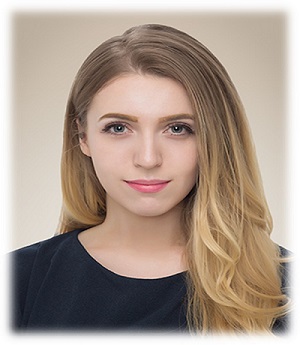| [Faculty News/교수동정] 전문통번역학과 Megan Taylor 교수님과의 인터뷰 | |||||
|---|---|---|---|---|---|
| 작성자 | 관리자 | 작성일 | 2025.09.29 | 조회수 | 80 |
| 첨부파일 | 그림1.jpg | ||||
 “When
Language Meets Storytelling” Q1. Professor
Taylor, what motivated you to join a graduate school of translation and
interpretation, and what drew you to this specific program? (교수님, 통번역대학원에 입학하게 된 계기는 무엇이었나요? 특별히 이 프로그램에 끌린 이유가 있다면 말씀 부탁드립니다.) A. When asked about my life’s greatest passions, I’ve always gravitated toward the same two answers: creative writing and the Korean language. My undergraduate major was screenwriting for film and television, and I’ve long been drawn to the magic of storytelling, captivated by how stagnant words on a page have the power to conjure compelling emotions in the hearts of readers. When
I began studying Korean as a foreign language, the further I progressed in my
fluency, the more I found myself comparing how creative works in each language
approached the art of storytelling. From the tone of the prose, to language-specific
color descriptors and onomatopoeia, to embedded cultural nuances, I realized
that while artistry is a universal human trait, our mother tongues are the
unique vessels that shape our expression of that artistry—and how the same
message can resonate differently in other languages.
To further explore this interplay between language and artistry, I knew I needed to improve my command of the Korean language and also expand the breadth of my knowledge. Graduate school was the natural next step. Out of all the post-graduate programs I had considered, I was drawn to AITP the most because of its well-rounded curriculum. Equal weight was given to teaching students both interpretation and translation—which require overlapping, yet distinct skillsets—as well as to bolstering their background knowledge in a variety of fields, including international relations, finance, global business, and more. Nowadays, I am pleased to find that the curriculum has grown even more diverse, offering specialized avenues for students to hone their abilities in the areas of public speaking, localization, technical writing, and post-editing, to name a few. Q2. As an expert in creative and cultural
fields, what advice would you give to students preparing for a career in
translation and interpretation? How do you see the future of the profession
evolving? (창의적이고
문화적인 영역의 전문가로서, 통번역 진로를 준비하는 학생들에게 어떤 조언을 해주시고 싶으신가요? 또 이 분야의 미래를 어떻게 전망하시는지도 궁금합니다.)
My
advice for students hoping to enter this field is to respect the basics, but
constantly strive to go beyond them. If you wish to bake a loaf of bread, all
you truly need is water, flour, and yeast. But if you’re attempting to
replicate what was once an indulgent, buttery, fragrant brioche in the text’s
original language by tossing together a crude blend of ingredients in a foreign
language mixing bowl, you may succeed in making bread, but you will fail to
sate the audience’s hunger. A strong command of grammar; a rich vocabulary; a general mastery of the Korean and English languages—these are your water, your flour, and your yeast. Each is crucial in the recipe of translation. However, artistry, emotional resonance, heightened cultural sensitivity, mindfulness of social trends and norms, a distinctive tone of voice, and that fiercely human spark—these are the special ingredients that a creative translator needs if they hope to replicate a brioche.
Q3. In your view, what are the key strengths
of our graduate program that set it apart from others? (교수님께서 보시기에 우리 AITP의 강점은 무엇이라고 생각하시나요?) A. An unwavering commitment to evolution and growth—that is what I consider the key strength of the program and the talented faculty spearheading it. Looking back at the program from when I first applied as a student, compared to now, nearly a decade on, I can say that I have had the privilege of watching it evolve year by year, constantly updating its curriculum to keep pace with industry trends and better cater to the needs of each new generation of interpreters. While keeping its finger on the pulse of the language services industry, AITP does not seek to educate the interpreters and translators of yesterday, but those of tomorrow.
As a whole, the program and its staff have left a deep impression on me owing to their dedication to supporting their students’ future careers—not only by empowering students to reach their full potential as expert talent, but also as culturally nuanced, empathetic, and articulate ambassadors of South Korea.
Interview by AITP
Korean-English Major, Bo-mi Shim |
|||||
Tel : 02-820-5623, 5624, 6477 Fax : 02-827-0155 E-mail : gsis@cau.ac.kr
Copyrightⓒ Graduate School of International Studies, Chung Ang University. All rights reserved.





